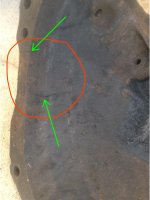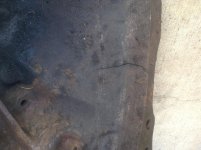I'm in the early stages of a frame off on my 68 289 Bronco. I've discovered a 3" crack in the bell housing. I'm a newby MIG welder and I'd like some advice on repairing the crack. Is welding recommeded? I understand the importance of making sure it's super clean. I'll have to grind out the crack to clean metal as its fully impregnated with grease, grit and oil.
If replacement is advised, are all the early V8 bell housings the same or do I need a specific one for this truck?
If replacement is advised, are all the early V8 bell housings the same or do I need a specific one for this truck?













